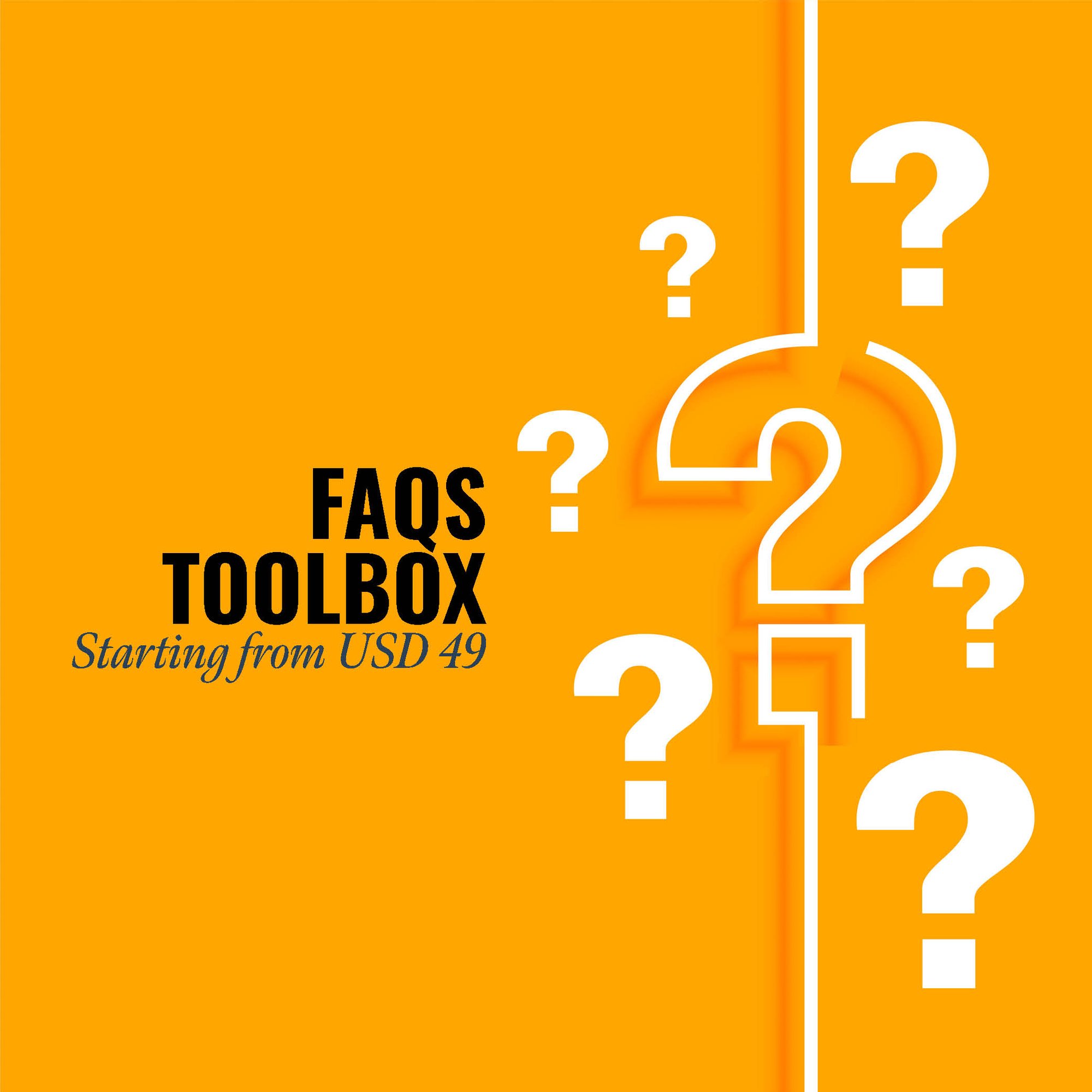The noteworthiness of an "SOP Manual for Wireless Telecommunications Carriers (except Satellite)" cannot be overstated in today's highly dynamic and competitive telecommunications industry:
-
Network Reliability: In a world increasingly reliant on wireless communication, network reliability is paramount. The manual ensures consistent network performance and maintenance, reducing downtime, dropped calls, and customer frustrations.
-
Data Security: As wireless carriers handle vast amounts of sensitive customer data, adherence to the manual's security protocols safeguards against data breaches and privacy violations, preserving trust and reputation.
-
Spectrum Management: With limited spectrum resources, efficient utilization is critical. The manual optimizes spectrum management, ensuring seamless service delivery and avoiding spectrum-related issues.
-
Regulatory Compliance: The telecommunications industry is heavily regulated. The manual provides guidance on adhering to these regulations, helping carriers avoid fines and legal complications.
-
Customer Satisfaction: Consistent, high-quality service, derived from the manual's procedures, leads to greater customer satisfaction, reduced churn, and increased revenue.
-
Competitive Advantage: Efficient operations and high service quality contribute to a competitive advantage, attracting and retaining customers in a crowded market.
In summary, the "SOP Manual for Wireless Telecommunications Carriers (except Satellite)" is essential for network reliability, data security, regulatory compliance, customer satisfaction, and maintaining a competitive edge in the fast-paced and ever-evolving world of wireless telecommunications.
CLICK HERE to download the List of SOPs Document in PDF format. Please share this document with your clients, colleagues and senior officers.
Top 50 SOPs for Standard Operating Procedures (SOPs) for Wireless Telecommunications Carriers (except Satellite)
SOP-792-001: Standard Operating Procedure for Network Planning and Design
SOP-792-002: Standard Operating Procedure for Spectrum Allocation
SOP-792-003: Standard Operating Procedure for Site Acquisition
SOP-792-004: Standard Operating Procedure for Tower Construction
SOP-792-005: Standard Operating Procedure for Antenna Installation
SOP-792-006: Standard Operating Procedure for Radio Frequency (RF) Planning
SOP-792-007: Standard Operating Procedure for Base Station Installation
SOP-792-008: Standard Operating Procedure for Backhaul Deployment
SOP-792-009: Standard Operating Procedure for Microwave Link Installation
SOP-792-010: Standard Operating Procedure for Small Cell Deployment
SOP-792-011: Standard Operating Procedure for Distributed Antenna Systems (DAS) Implementation
SOP-792-012: Standard Operating Procedure for Cell Site Integration
SOP-792-013: Standard Operating Procedure for Interference Management
SOP-792-014: Standard Operating Procedure for Network Optimization
SOP-792-015: Standard Operating Procedure for Radio Access Network (RAN) Configuration
SOP-792-016: Standard Operating Procedure for Core Network Deployment
SOP-792-017: Standard Operating Procedure for Mobile Switching Center (MSC)
Installation
SOP-792-018: Standard Operating Procedure for Home Location Register (HLR) Implementation
SOP-792-019: Standard Operating Procedure for Visitor Location Register (VLR) Deployment
SOP-792-020: Standard Operating Procedure for Evolved Packet Core (EPC) Integration
SOP-792-021: Standard Operating Procedure for Voice over LTE (VoLTE) Implementation
SOP-792-022: Standard Operating Procedure for Quality of Service (QoS) Management
SOP-792-023: Standard Operating Procedure for Network Security
SOP-792-024: Standard Operating Procedure for Disaster Recovery Planning
SOP-792-025: Standard Operating Procedure for Emergency Response
SOP-792-026: Standard Operating Procedure for Network Monitoring
SOP-792-027: Standard Operating Procedure for Fault Detection and Resolution
SOP-792-028: Standard Operating Procedure for Performance Measurement
SOP-792-029: Standard Operating Procedure for Capacity Planning
SOP-792-030: Standard Operating Procedure for Billing System Integration
SOP-792-031: Standard Operating Procedure for Customer Service Support
SOP-792-032: Standard Operating Procedure for Roaming Agreements
SOP-792-033: Standard Operating Procedure for Regulatory Compliance
SOP-792-034: Standard Operating Procedure for Environmental Compliance
SOP-792-035: Standard Operating Procedure for Health and Safety Practices
SOP-792-036: Standard Operating Procedure for Equipment Maintenance
SOP-792-037: Standard Operating Procedure for Firmware Updates
SOP-792-038: Standard Operating Procedure for Software Upgrades
SOP-792-039: Standard Operating Procedure for Vendor Management
SOP-792-040: Standard Operating Procedure for Contract Negotiations
SOP-792-042: Standard Operating Procedure for Change Management
SOP-792-043: Standard Operating Procedure for Incident Management
SOP-792-044: Standard Operating Procedure for Problem Management
SOP-792-045: Standard Operating Procedure for Knowledge Management
SOP-792-046: Standard Operating Procedure for Training and Development
SOP-792-047: Standard Operating Procedure for Documentation Management
SOP-792-048: Standard Operating Procedure for Audits and Inspections
SOP-792-049: Standard Operating Procedure for Business Continuity Planning
SOP-792-050: Standard Operating Procedure for End-of-Life Equipment Disposal
SOP ToolBox: If you are reading these lines, I am sure you are looking for Standard Operating Procedure guidelines or SOPs itself. In both the cases, searching in internet will not be yielding any great help. Because no company shares their SOP Development Process and certainly don’t share their SOP Documents. The best way to develop an SOP is creating one for yourself. At Fhyzics, we write SOPs day-in and day-out for companies across the globe including some of the Fortune 500 organisations. Our charge ranges from USD 5000 to USD 50000 depending upon the number of processes to be covered. Certainly, this is not affordable to small and mid-size organisations. Hence, we decided to create this SOP ToolBox to disseminate our 8-Step SOP Development Life-Cycle and best practices at an unbelievably low price.
I always say, writing an SOP is somewhere between art and science. So far you may be clueless on where to start and how to progress on an SOP? This will not be the case after you diligently go through this SOP ToolBox. We have summarised all our secrets here to get you started and to deliver a stunning SOP to your management.
Receivers and Transmitters are the key devices required for Wireless Transmission. For wireless transmission, the transfer of data must take place without the use of wires as the name suggests. An Oscillator in the transmitter generates a periodic wave. The antenna propagates the wave. The antenna is made of conductors. Therefore electric current can propagate through the end of the antenna. This facilitates the antenna to generate electromagnetic waves. Depending on how fast signal from the oscillator changes, output waves have different frequencies. Different range of frequencies are called as spectrum. Depending on the specific area of usage and the application, the spectrum is decided. A signal doesn't usually get directly into the receiver while it is received. A travelling signal faces a lot of issues like time delay, attenuation, etc. Amplifying the received signal can be a big task. In order to simplify this, encoding is performed by the transmitter. This process adds additional bits to the message. This makes the recovery process easier. The encoded bits are mapped and modulated before they are ready for transmission. Antennas are used by both the transmitters and the receivers. Once the message is received, it is encoded by the receiver. The ability to use electromagnetism is called as Magnetoreception. Electromagnetic waves are used for television broadcasts, cell phones, Bluetooth, radio, and every other form of wireless communication.
1. Standard Operating Procedures (SOP) Manual for Accounts Department
2. Standard Operating Procedures (SOP) Manual for Finance Department
3. Standard Operating Procedures (SOP) Manual for Customer Service
4. Standard Operating Procedures (SOP) Manual for CRM Department
5. Standard Operating Procedures (SOP) Manual for Credit Department
6. Standard Operating Procedures (SOP) Manual for Treasury Department
7. Standard Operating Procedures (SOP) Manual for Human Resources (HR) Department
8. Standard Operating Procedures (SOP) Manual for Training Department
9. Standard Operating Procedures (SOP) Manual for Learning & Development Department
10. Standard Operating Procedures (SOP) Manual for Administration Department
11. Standard Operating Procedures (SOP) Manual for Front Office
12. Standard Operating Procedures (SOP) Manual for House Keeping
13. Standard Operating Procedures (SOP) Manual for Safety Department
14. Standard Operating Procedures (SOP) Manual for Security Department
15. Standard Operating Procedures (SOP) Manual for Facilities Management Department
16. Standard Operating Procedures (SOP) Manual for Vigilance Department
17. Standard Operating Procedures (SOP) Manual for Legal Department
18. Standard Operating Procedures (SOP) Manual for Information Technology (IT) Department
19. Standard Operating Procedures (SOP) Manual for Sales & Marketing Department
20. Standard Operating Procedures (SOP) Manual for Design & Engineering
21. Standard Operating Procedures (SOP) Manual for Procurement Department
22. Standard Operating Procedures (SOP) Manual for Production
23. Standard Operating Procedures (SOP) Manual for SRM Department
24. Standard Operating Procedures (SOP) Manual for Supply Chain Department
25. Standard Operating Procedures (SOP) Manual for Warehouse
26. Standard Operating Procedures (SOP) Manual for New Product Development Department
27. Standard Operating Procedures (SOP) Manual for Research and Development
28. Standard Operating Procedures (SOP) Manual for Quality Department
29. Standard Operating Procedures (SOP) Manual for Calibration Department
30. Standard Operating Procedures (SOP) Manual for Maintenance Department
All types of waves can be measured by their amplitude and frequency. The amplitude of a wave measures how tall a wave is from its midpoint to its top or bottom. The frequency of a wave measures how fast a wave is traveling. This also translates into how compressed the wave is or how many crests and troughs can be found per unit of distance. Radio waves can be naturally generated through electric pulses. Both the amplitude and the frequency of a wave can be modulated.
Wireless communication can be used for cellular telephony, wireless access to the internet, wireless home networking, and so on. Other examples of applications of radio wireless technology include GPS units, garage door openers, wireless computer mice, keyboards and headsets, headphones, radio receivers, satellite television, broadcast television and cordless telephones
- Television and Radio Broadcasting
- Satellite Communication
- Radar
- Mobile Telephone System (Cellular Communication)
- Global Positioning System(GPS)
- Infrared Communication
- WLAN (Wi-Fi)
- Bluetooth
- Paging
- Cordless Phones
- Radio Frequency Identification(RFID)
- RF Power Transistor Packages
- Microwave Integrated Circuits
- Field Effective Transistors
- High Electron Mobility Transistors
- Thin Film MIC Substrates
- Network Interface Cards
- Range Extenders
- Wireless Repeaters
- Wireless Bridges
- Omnidirectional Aerials
- Wireless Adapters
- AT & T (Dallas,USA)
https://www.att.com/ - Verizon Communications (New York, USA)
https://www.verizon.com/about - Nippon Telegraph and Telephone (Tokyo, Japan)
https://www.ntt.co.jp/index_e.html - China Mobile (Beijing, China)
https://www.chinamobileltd.com/en/global/home.php
-
https://www.ieee.org/membership-catalog/productdetail/showProductDetailPage.html?product=PER329-ELE
Research By : Aadithya
Please click here to review the SOP Templates’ Terms & Conditions.
Keywords: sop, manual, policy, sop meaning, sop full form, standard operating procedure, full sop, user manual, sop is, user guide, instruction manual, owners manual, sample sop, operators manual, sop example,standard operating procedure examples, abbreviation sop, standard operating procedure sample, milk sop, sop document, sop process,m manual, operating procedures, operating process, sop meaning in hindi, standard procedure, sop standard operating procedure, sop top, sop writing, standard operating procedures manual, sop meaning in english, sample sop for mba, standard operating procedures examples in office, product manual, sample sop for ms, maintenance manual, sop security, sop in research, sop in business, whats sop, standard of operation, sop set, sop procedure, sop marketing,sop training, sop hotel, sop, sop meaning business, sop form, sba sop,sop software, help manual, sop it, army sop, company sop, sop sap, o m manual, standard operating procedure examples for small business, shop manual, sop manual, sop meaning in business, purpose of standard operating procedures, sop full meaning, standard operating procedure meaning, sop military, sop standard, sop meaning medical, hr sop, sop production, purpose of sop, sop management, warehouse sop, sales sop, sop pharma, sop manufacturing, sop creation, sop laboratory, ms sop, sop full form in hindi, sop front office, sop customer service, sop online, gmp sop, sop purchasing, sop pharmacy, sop safety, sop for project management,sample sop for australian student visa, sop meaning in tamil, sop system, best sop, sop up, sop in english, sop for mechanical engineering, sop for university,sop in malay, sop lab, sop for business analytics, sop model, sop in pharmacy, developing sops, standard operating procedure examples manufacturing, sop full form in retail,sop full form in medical, sop engineering, sop application, writing standard operating procedures, procurement sop, sop maintenance,standard operating procedure nhs, sop clinical trial, sop operations,sop in construction, operating procedures manual, standard operating procedure ppt, standard procedure meaning, sop ppt, a sop, sop document meaning, sop def, sop full form in safety, sop quality control, sop for college, sop quality, sop service, types of sop, sop for engineering management, sop document sample, benefit of sop, preparing sop, standard operating procedure in hindi, sop for visa, sop compliance, sop protocol, sop aviation, sop meaning in chat, standard operating process, sop meaning military, sop for business management, standard operating procedure software, sop list, sop medical, sop logistics, sop project, sop for it department, sop call center, standard work procedures, sba sop 50 10, sop meaning in logistics, standard operating procedure laboratory, test sop, sop sample for ms, drafting sop, sops meaning in tamil, sops meaning in telugu, sop automotive, standard operating system, sop cafe, sop slideshare, sop ap, sop bank, sop in retail, creating standard operating procedures, sop admin, document control sop, pharmaceutical sop,sop in pharmaceutical industry, statement of purpose harvard, sop examples for ms, quality assurance sop, sop in clinical research, nursing sop, sop for transportation, sop policies, sops are specific to a process, sop in hindi, standard operating procedure for warehouse picking, master sop, list of sop for pharma, pharmaceutical sop examples, types of standard operating procedures, retail sop, sample sop for ms in mechanical engineering, standard operating protocol,sop supply chain, system operating procedure, sop rules, example of sop in research, sop in food industry, sop for international business management, sop for hospitality management, sop for hr department, army sop example, sop standard operating, office sop, hr standard operating procedures, preventive maintenance sop, sop for purchase department, human resources sop, fire department sops, information technology sop, operating procedure example, administration sop,sop for retail store, indian sop, construction management sop, sop hotel front office, example sop document, standard and procedures,working sop, sop for maintenance department, sop hrd department,sop full form in hotel industry, sop full, sop for human resource management, laboratory sop examples, standard operating procedure for quality control, sop for ms in mechanical engineering, sop meaning army, security standard operating procedures, sop machine, sample sop for internship, sop for hotel management, sample sop for masters, qa sop, developing standard operating procedures, standard operating procedure document, product recall sop, marketing statement of purpose, it standard operating procedures, equipment sop, sop purpose example, sop shipping, sop for sales and marketing,converting pos to sop, workshop sop, standard operating procedure manufacturing, digital marketing standard operating procedures, following standard operating procedures, sop ki full form, sop for nursing procedures, an sop, purchase sop for manufacturing company, sop a, statement of purpose for mba marketing, full meaning of sop, sop for research internship, research sop sample,vendor qualification sop, sop purchasing and receiving, sop meaning in visa, sop for admission, standard operating procedure medical office, sop in industry, sop sales marketing, navy sop, project management standard operating procedures, sop it support, standard operating manual, security operating procedures, statement of purpose for international business, procurement standard operating procedures, communication sop, sop full form in pharma, minimum sop, sop health and safety, product sop, sop for marketing department, sop in medical terms, sales standard operating procedure, sop purchase order, department sop, customer service standard operating procedures, clinical sop, marketing standard operating procedure, sop standard operating procedure example, construction standard operating procedures, standard of operations procedures manual sample, sop for facility management, sop full form in education, standard operating procedure in food industry, visa sop,sop for business administration, company sop meaning, sop work, sop operating procedure, sop for summer internship in engineering sample, general administration sop, sop for administrative duties.
Our SOP Templates’ clients are from the following States and Countries:
Alabama, Alaska, Arizona, Arkansas, California, Colorado, Connecticut, Delaware, Florida, Georgia, Hawaii, Idaho, Illinois, Indiana, Iowa, Kansas, Kentucky, Louisiana, Maine, Maryland, Massachusetts, Michigan, Minnesota, Mississippi, Missouri, Montana, Nebraska, Nevada, New Hampshire, New Jersey, New Mexico, New York, North Carolina, North Dakota, Ohio, Oklahoma, Oregon, Pennsylvania, Rhode Island, South Carolina, South Dakota, Tennessee, Texas, Utah, Vermont, Virginia, Washington, West Virginia, Wisconsin, Wyoming.
Afghanistan, Albania, Algeria, Andorra, Angola, Antigua and Barbuda, Argentina, Armenia, Australia, Austria, Azerbaijan, Bahamas, Bahrain, Bangladesh, Barbados, Belarus, Belgium, Belize, Benin, Bhutan, Bolivia, Bosnia and Herzegovina, Botswana, Brazil, Brunei Darussalam, Bulgaria, Burkina Faso, Burundi, Cabo Verde, Cambodia, Cameroon, Canada, Central African Republic, Chad, Chile, China, Colombia, Comoros, Congo (Republic of the), Costa Rica, Croatia, Cuba, Cyprus, Czech Republic (Czechia), Democratic People’s Republic of Korea (North Korea), Democratic Republic of the Congo, Denmark, Djibouti, Dominica, Dominican Republic, Ecuador, Egypt, El Salvador, Equatorial Guinea, Eritrea, Estonia, Eswatini, Ethiopia, Fiji, Finland, France, Gabon, Gambia, Georgia, Germany, Ghana, Greece, Grenada, Guatemala, Guinea, Guinea-Bissau, Guyana, Haiti, Honduras, Hungary, Iceland, India, Indonesia, Iran, Iraq, Ireland, Israel, Italy, Jamaica, Japan, Jordan, Kazakhstan,Kenya, Kiribati, Kuwait, Kyrgyzstan, Lao People’s Democratic Republic (Laos), Latvia, Lebanon, Lesotho, Liberia, Libya, Liechtenstein, Lithuania, Luxembourg, Madagascar, Malawi, Malaysia, Maldives, Mali, Malta, Marshall Islands, Mauritania, Mauritius, Mexico, Micronesia (Federated States of), Moldova, Monaco, Mongolia, Montenegro, Morocco, Mozambique, Myanmar (Burma), Namibia, Nauru, Nepal, Netherlands, New Zealand, Nicaragua, Niger, Nigeria, North Macedonia (formerly Macedonia), Norway, Oman, Pakistan, Palau, Panama, Papua New Guinea, Paraguay, Peru, Philippines, Poland, Portugal, Qatar, Republic of Korea (South Korea), Republic of the Congo, Romania, Russian Federation (Russia), Rwanda, Saint Kitts and Nevis, Saint Lucia, Saint Vincent and the Grenadines, Samoa, San Marino, Sao Tome and Principe, Saudi Arabia, Senegal, Serbia, Seychelles, Sierra Leone, Singapore, Slovakia, Slovenia, Solomon Islands, Somalia, South Africa, South Sudan, Spain, Sri Lanka, Sudan, Suriname, Sweden, Switzerland, Syrian Arab Republic (Syria), Tajikistan, Thailand, Timor-Leste, Togo, Tonga, Trinidad and Tobago, Tunisia, Turkey, Turkmenistan, Tuvalu, Uganda, Ukraine, United Arab Emirates, United Kingdom of Great Britain and Northern Ireland, United Republic of Tanzania, United States of America, Uruguay, Uzbekistan, Vanuatu, Venezuela, Viet Nam, Yemen, Zambia, Zimbabwe.
Fhyzics supports organisations in developing the following documentations:
Standard Operating Procedures (SOPs), Work Instructions, Policies and Procedures, Process Flow Diagrams, Job Descriptions, Training Manuals, Employee Handbooks, Compliance Guidelines, Quality Assurance Manuals, Health and Safety Procedures, Risk Management Plans, Business Continuity Plans, Internal Audit Procedures, Incident Reporting Forms, Performance Management Guidelines, Change Management Procedures, Vendor Management Guidelines, Customer Service Protocols, IT Security Policies, IT Support Documentation, Disaster Recovery Plans, Operational Checklists, Data Management Policies, Confidentiality Agreements, Non-Disclosure Agreements, Employee Onboarding Procedures, Employee Exit Procedures, Performance Appraisal Forms, Employee Code of Conduct, Conflict Resolution Procedures, Product Development SOPs, Supply Chain Management Guidelines, Procurement Guidelines, Inventory Management SOPs, Shipping and Receiving Procedures, Production Scheduling SOPs, Maintenance Procedures, Equipment Calibration Documents, Environmental Compliance Documentation, Sustainability Policies, Customer Feedback Forms, Marketing Strategies, Advertising Guidelines, Brand Management Guidelines, Product Packaging SOPs, Laboratory Testing Procedures, Regulatory Compliance Documentation, Tax and Accounting Procedures, Contract Management Procedures, Legal Compliance Guidelines, Financial Reporting Procedures, Budgeting Procedures, Internal Control Procedures, Fraud Prevention Policies, Asset Management Guidelines, Purchase Order Procedures, Sales and Distribution Guidelines, Client Contracts, Customer Return Policies, Internal Communication Protocols, Vendor Evaluation Forms, Product Safety Standards, Workplace Health and Safety Standards, Public Relations Procedures, Social Media Management Guidelines, Crisis Management Plans, Employee Grievance Procedures, Privacy and Data Protection Policies, Digital Transformation Guidelines, Innovation Management Procedures, Continuous Improvement Guidelines, Strategic Planning Documents, Corporate Social Responsibility (CSR) Guidelines, Audit Trails and Records, Employee Training and Development Records, Succession Planning Documents, Talent Acquisition Procedures, Team Collaboration Protocols, Employee Benefit Plans, Workplace Diversity Guidelines, Time and Attendance Tracking, Payroll Procedures, Employee Leave Policies, Conflict of Interest Policy, Emergency Response Procedures, Environmental Impact Assessment Procedures, Transportation and Logistics Procedures, Inventory Control Forms, Warehouse Management Guidelines, Product Lifecycle Management SOPs, Customer Satisfaction Surveys, Third-Party Risk Assessment Guidelines, Technology Adoption Policies, Software Licensing Guidelines, Security Incident Response Procedures, Supply Chain Risk Management Policies, Product Recall Procedures, Food Safety Guidelines, Employee Wellness Programs, Workplace Ergonomics Guidelines.






.jpg?width=645&height=337&name=Standard%20Operating%20Procedure%20-%20SOP%20ToolBox%20(1).jpg)











